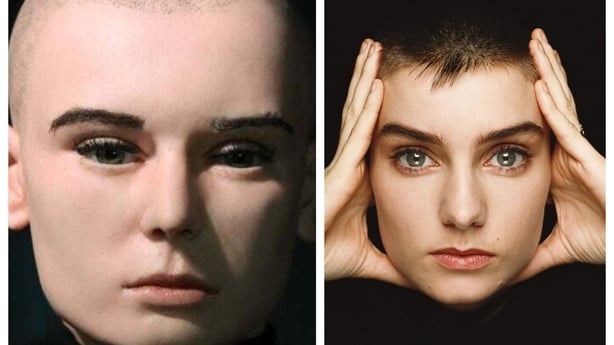Analysis: The controversy around the Sinéad O'Connor waxwork raises a number of copyright issues about the the use of an individual's likeness in this way
By Liam Sunner, Queen's University Belfast
A wax figure of Sinéad O'Connor was unveiled at the National Wax Museum yesterday on the anniversary of her passing. Following the reveal, the wax figure was subject to complaints and criticism regarding its accuracy and likeness, so much so that it was removed today with a promise that the sculpting team will put out an improved version.
This raises a number of legal questions on the use of likeness, permissions of the individual or their family if they have passed, commercial appropriation, and duty to ensure quality. First and foremost, bad art in itself isn't illegal. While we as a society, artistic community, or wax figure aficionados are entitled to voice our opinions on the quality, or lack of, in some instances of various artistic endeavours, we can’t outlaw bad art.
We need your consent to load this rte-player contentWe use rte-player to manage extra content that can set cookies on your device and collect data about your activity. Please review their details and accept them to load the content.Manage Preferences
From RTÉ Radio 1's Liveline, Sinéad O'Connor's brother John, the National Wax Museum's Paddy Dunning and listeners discuss the waxwork controversy
That said, certain publications of media may be contrary to other areas of law, such as image-based sexual offences. Rather, we are focusing on lawful but artistically bad or unskilled efforts. Primarily this relates to the freedom of expression afforded to artists, but would raise further issues of what amounts to good/bad art, who determines this objective criteria, and if it was a criminal act to produce bad art, prosecution by the state would quickly run into questions of censorship.
However, the private individual who is the subject of the art piece may have some grounds to prevent or restrict artistic endeavours in their image or likeness. This protection of image or likeness stems from the laws related to your right to privacy and a private life that is afforded to individuals.
But what about celebrities and individuals who trade, market, and economically exploit their likeness? Can the Kardashians claim a right to privacy as we attempt to keep up with them? Yes and no, and far beyond the space we have here, but it moves the discussion to the how likeness is protected. Broadly, likeness falls under intellectual property law and the tort of passing off. The latter moreso for implied association and approval of products, goods, and services. For example, in relation to celebrities and the public, this would be implied approval or authorised between celebrities and ad product by virtue of their likeness on it.
But how does this relate to a wax figure on display in a museum? Depending on the nature of the figure, and whether the object is a real person or fictional character, copyright protections can be used to prevent unauthorised or unlicensed reproductions of the character. This can apply equally to real people portraying a character or in refence to a specific wardrobe or style they have worn and become identified with. Such protections exist to stop unauthorised use and economic exploitation even where the character is not named, identified, or advertised such as wider pop culture exhibit at a museum.
Normally, where the infringing art piece relates to a real person or them as a specific character, the person themselves would control the likeness rights. However, where the person has passed, their rights may be under the control and protection of a family member or trust. In such cases, the controlling party may seek unauthorised uses be removed or restricted to protect the commercial value, artistic integrity, or combination of both amongst other factors for the likeness. On the other hand, they have the legal powers to authorise such use for wax figures, for example, or holograms.

Unlike in the US, where legislation exists for the fair use of individuals who have made themselves public figures, no such right exists in Ireland and the estate of Sinéad O'Connor may be entitled to seek a removal or prevent further use of her likeness, name, and recognition within Irish culture. Additionally, there is the value of recognition in being made into a wax figure, and how it symbolises the importance and contributions of the individual. In this connection, there may be some negative PR elements that could be raised by strictly enforcing a legal right.
While it would be possible to bring a legal action to prevent the use of the likeness of a pop star as a wax figure, the circumstances suggest this won’t happen and objections were related to the quality of the final piece more than its existence. As the museum is redoing the display piece to better reflect the artist and her personality, there doesn’t seem to be a legal issue going forward. Perhaps if they had refused, the family would be had some ground to prevent a subquality wax figure being included. However, that is not to say such issue couldn’t arise in the future in relation to other individuals.
Follow RTÉ Brainstorm on WhatsApp and Instagram for more stories and updates
Dr Liam Sunner is a lecturer in the School of Law at Queen's University Belfast
The views expressed here are those of the author and do not represent or reflect the views of RTÉ

